How to Start a Sawmill Business
Milling wood can make a ton of money, giving you a healthy cash flow as you make, dry and sell timber
Many sawyers who have started custom sawing businesses are reaping the benefits, profiting from regular sales thanks to their portable sawmills.
But what does it take to start a portable sawmill business and what sort of business planning is required?
Let's get into how you can use your portable band mill to mill up your own logs, create low cost wood and sell it to your local market to generate profit.
What is a sawmill business?
Sawmill businesses are commercial enterprises where timber is processed into lumber to be sold for profit. There are large-scale sawmills that process hundreds of logs per day and small-scale ones run by individuals using portable bandsaws like the Woodland Mills portable sawmill.
These small-scale businesses are great for turning locally sourced wood into custom dimensions and slabs for woodworkers in the local market.
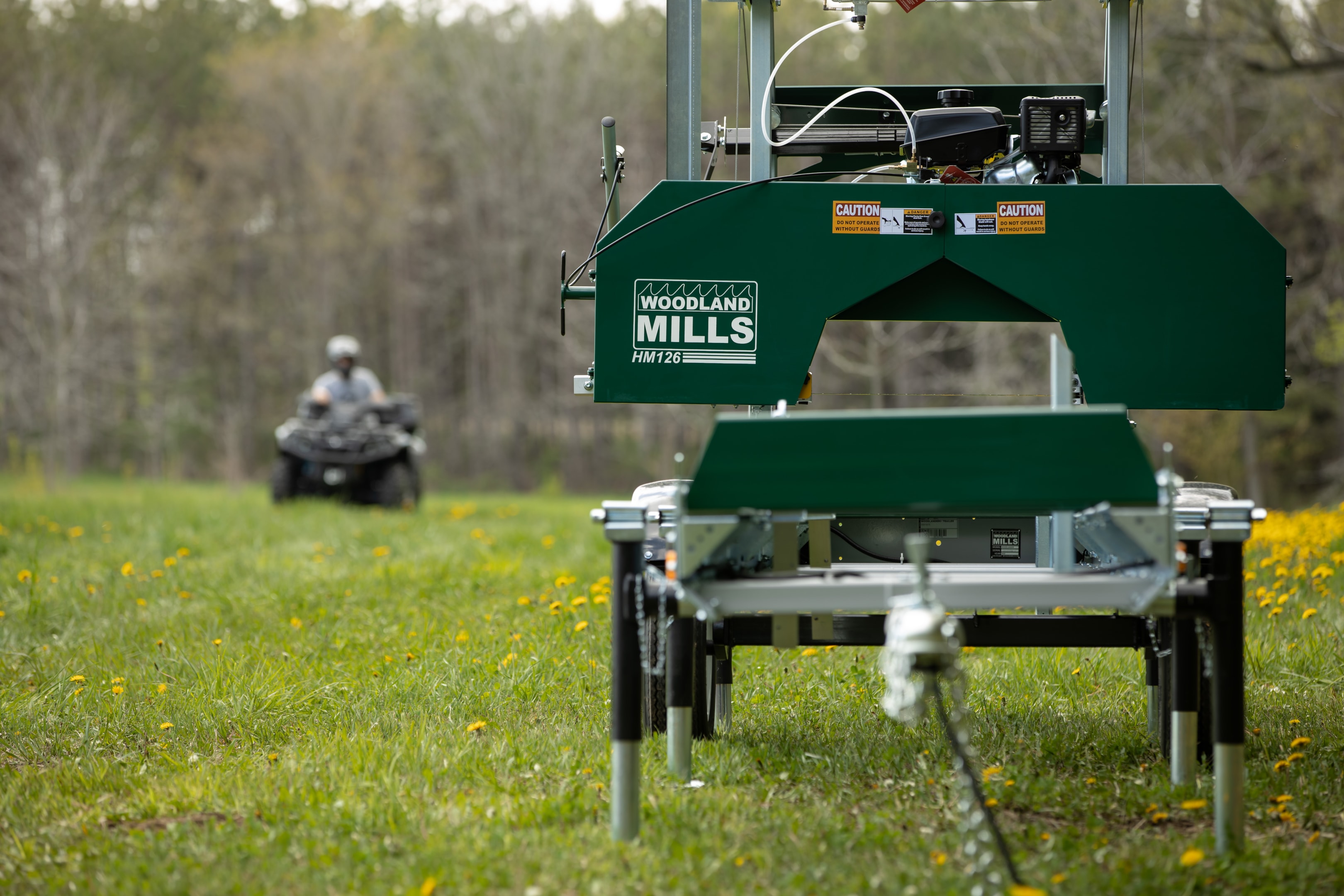
Can you make money with a sawmill?
Portable sawmills can be profit generating machines, it's just a matter of putting in the work. With a consistent source of logs and a stream of repeat customers you can constantly be sawing, drying and selling lumber and generating a profit.
Many portable sawmill owners run their own sawmill businesses, like Clay from Oakmond Design or Rick from Rustic Harbors, who use their Woodland Mills sawmills to do custom milling jobs.

What do I need to start a sawmill business?
Starting your own lumber business is easy and it starts with having the right equipment and preparation. Here is some equipment you should consider:
-
-
A portable mill (consider a larger model like the HM130MAX)
-
A business plan
-
Workspace to mill lumber or store your sawmill
-
A solar kiln or dehumidification kiln
-
Support equipment like a planer, edger, etc.
-
Equipment to fell trees
-
You may not need all of the above equipment if you're not planning on an entire operation of downing trees to turn into lumber. If you plan on buying logs or finding them for free then you may not need a trailer to carry them long distance, but instead could use a log arch like the Loglander 20 with an ATV.
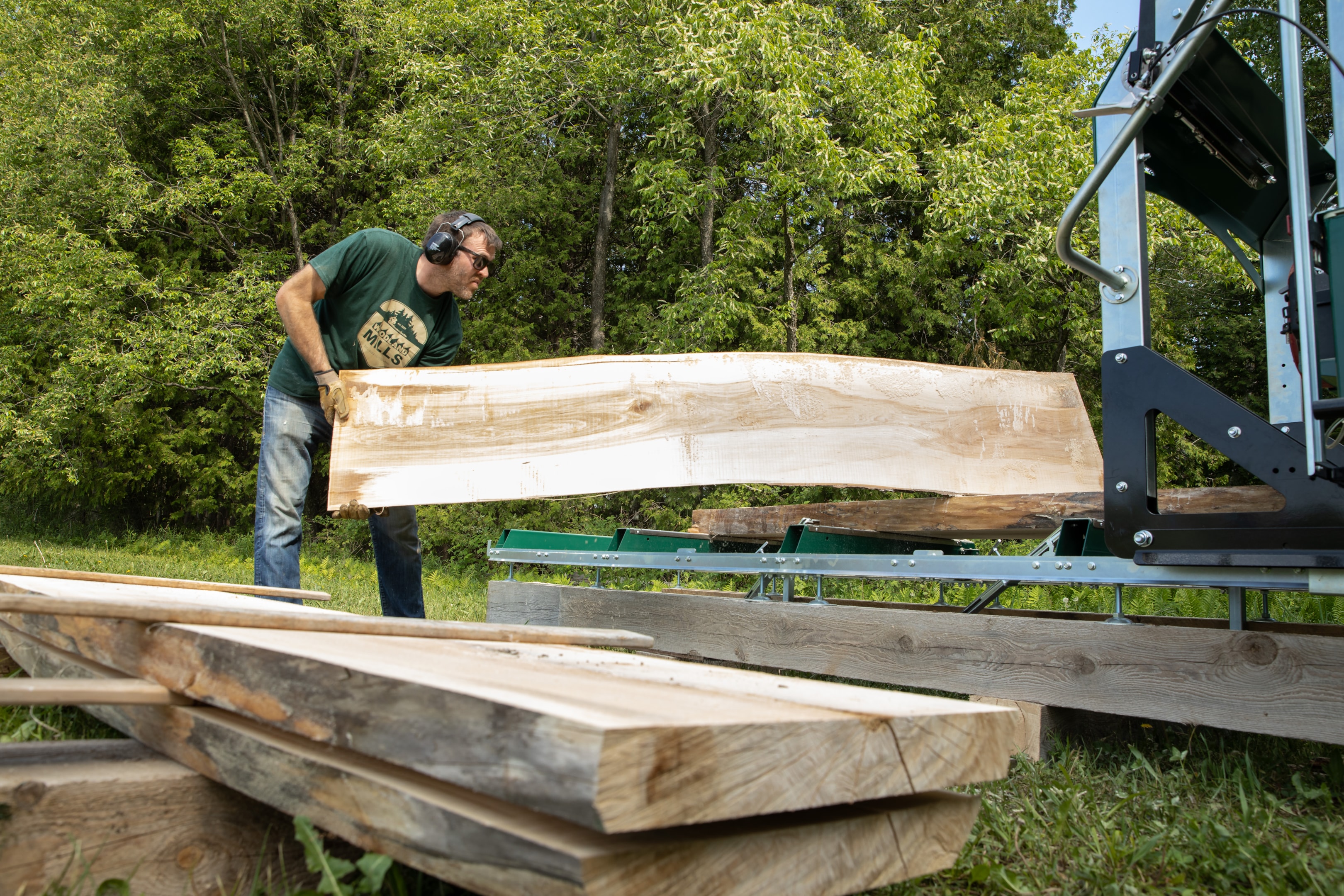
What type of portable sawmill should I get?
If you plan on milling smaller logs then you can use a sawmill like the HM126. In general you should always get a sawmill that can cut 20% larger than the biggest log you plan on milling, so if your largest log is 26" wide then you may want to size up to the HM130MAX.
If you get an HM136MAX then it all but guarantees you're able to mill most logs that come into your lot but even small sawmills can produce a ton of lumber.
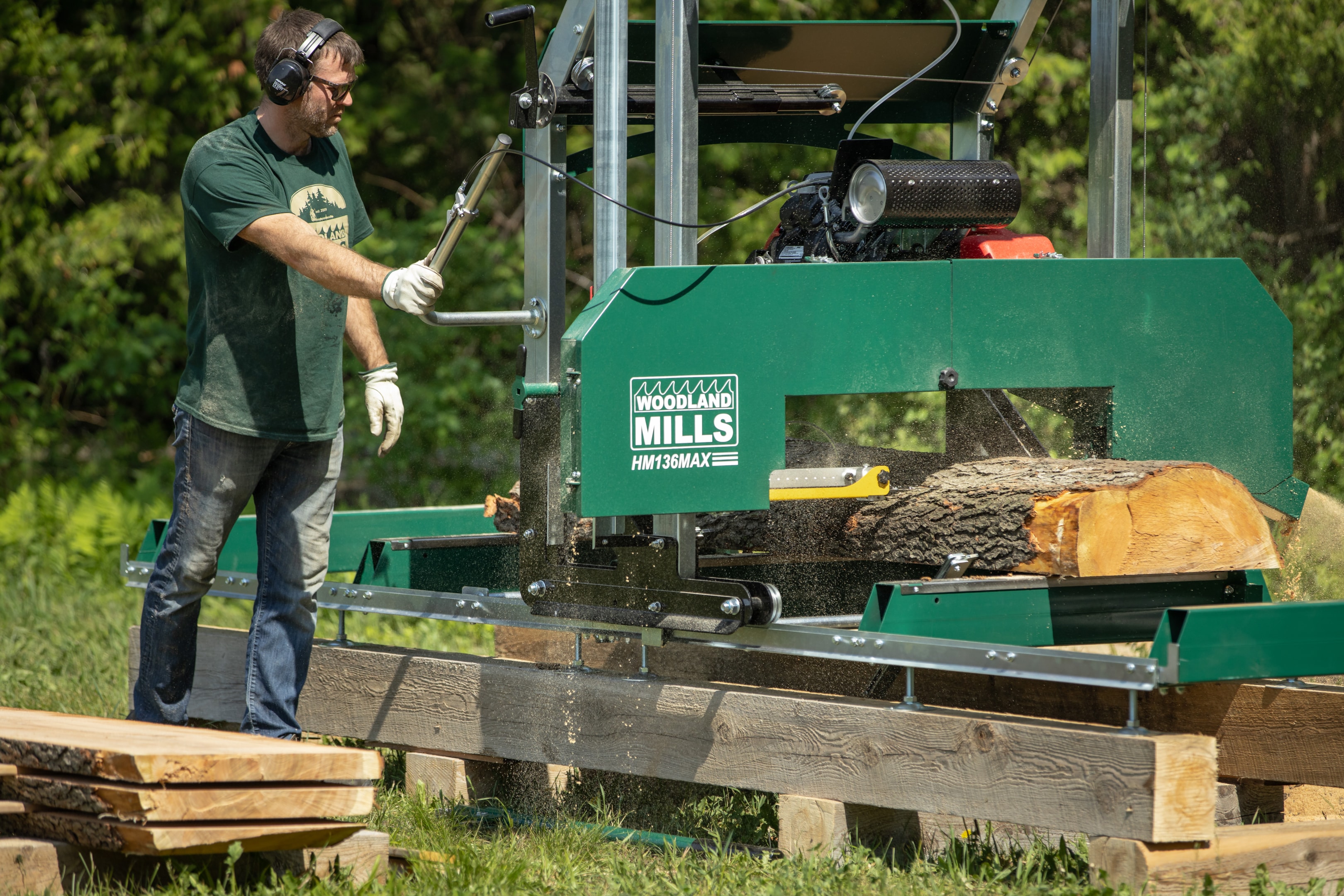
How do I start my own sawmill business?
It may take time to get your operation running, but with quick thinking and smart planning you can be milling logs for hire quickly. Here's what you should do:
Step 1: Setup Your Sawmill Operation
Establish your home base of operations as you prepare to mill thousands of board feet of lumber. At home in your driveway, in your workshop or somewhere on your property set up a place to store you mill, whether you plan on keeping it ground-mounted or have it on a trailer and need a place to store it.
A sawmill shed is often a wise choice for those who ground mount their mills. You can build up your shed in your spare time and keep your mill protected with a sawmill cover in the meantime.
You may need the following for your workshop:
-
-
A place to store your sawmill and logs
- A reliable sawmill like the HM130MAX
-
A place to keep your blades and spare parts
-
A blade sharpener like the RS30 PRO to resharpen dull blades
-
A way to move logs like a tractor with a grapple or an ATV trailer with a log arch
-
Step 2: Dry Your Lumber
If you're asked to do a one-off job with a single log then you don't need to plan out your lumber's moisture content, but for a small-scale commercial enterprise you'll want a drying solution that gets your wood dry quick, so you can get to selling it faster.
Build your own kiln, be it a solar kiln or dehumification kiln, that can quickly reduce the moisture content in your lumber once it's been milled.
For a kiln we recommend:
-
-
Lumber is properly stacked and stickered
-
Has enough room around it for proper airflow
-
Generates heat, be it with a window to let in sunlight or space heaters
-
Fans to disperse heat and move it through your lumber stacks
-
Black paint always help soak in more heat
-
Shipping containers can make for a popular chassis to house your kiln, but other sawyers will use milled lumber to make a solar kiln. Air drying is also an option but this is much slower and less controlled.
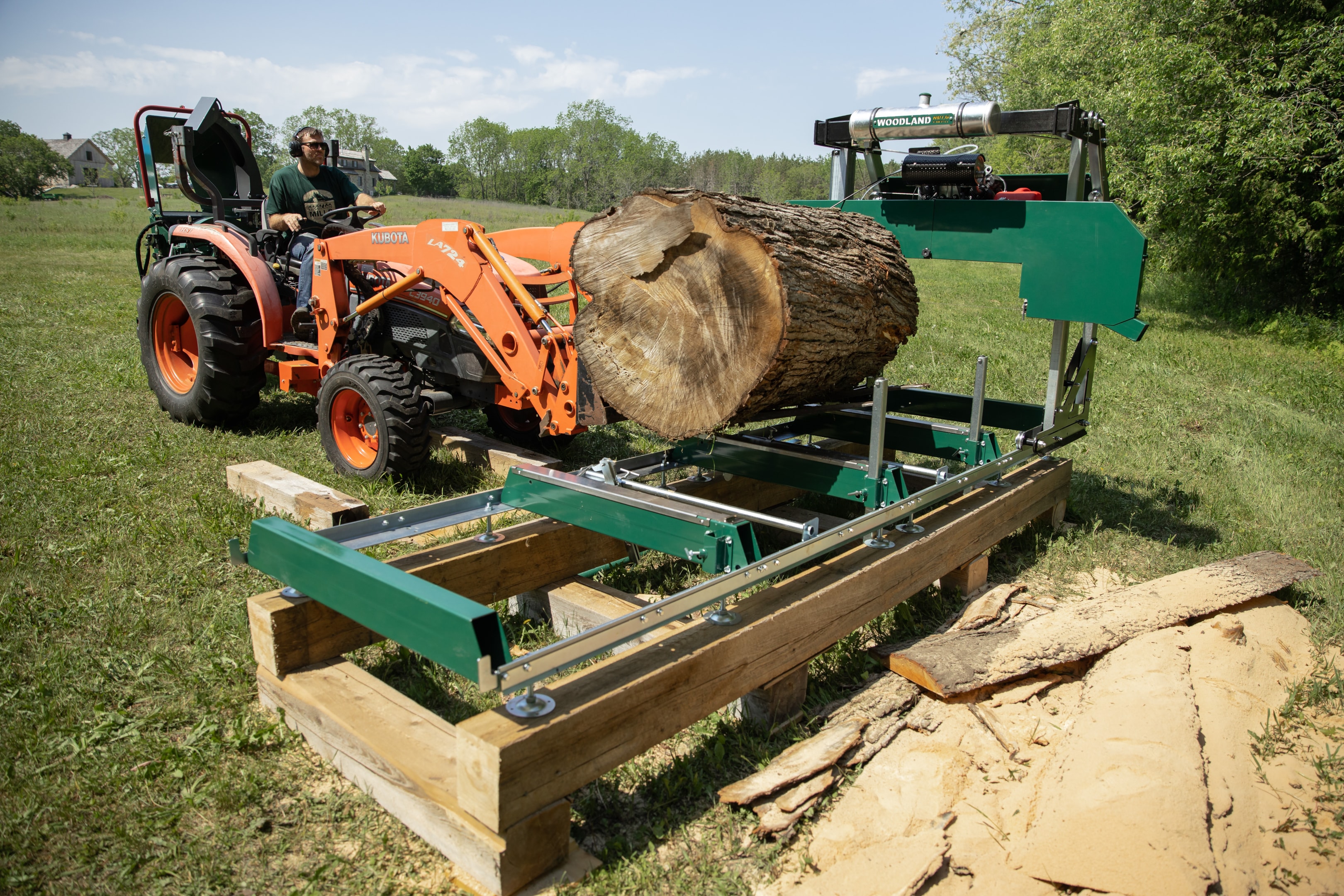
Step 3: Market Yourself
Having a smart business plan and the tools do to the job don't mean anything if you don't have customers. Find ways to connect with your local market and meet woodworkers in your area.
Some recommended strategies include:
-
-
Using Facebook Marketplace
-
Putting ads in the classified section of your local newspaper
-
Going to craft shows as a vendor or customer
-
Attending meetings of local groups or clubs where woodworkers connect
-
Once you've started forming relationships you can establish repeat business. Have business cards with your contact info or social medias. Having a Facebook or Instagram account where you post your most recent cuts of lumber are a great way to create a portfolio to share with prospective customers.
Once you've gotten new business, reach out to those customers down the line and check to make sure they're happy with their purchase. This way you can check and see if they need any more lumber. Also check back in on prior customers, even ones you've met years ago, to see if they need anything new.
By becoming a familiar face in your local area, you'll establish yourself as a go-to source for lumber.
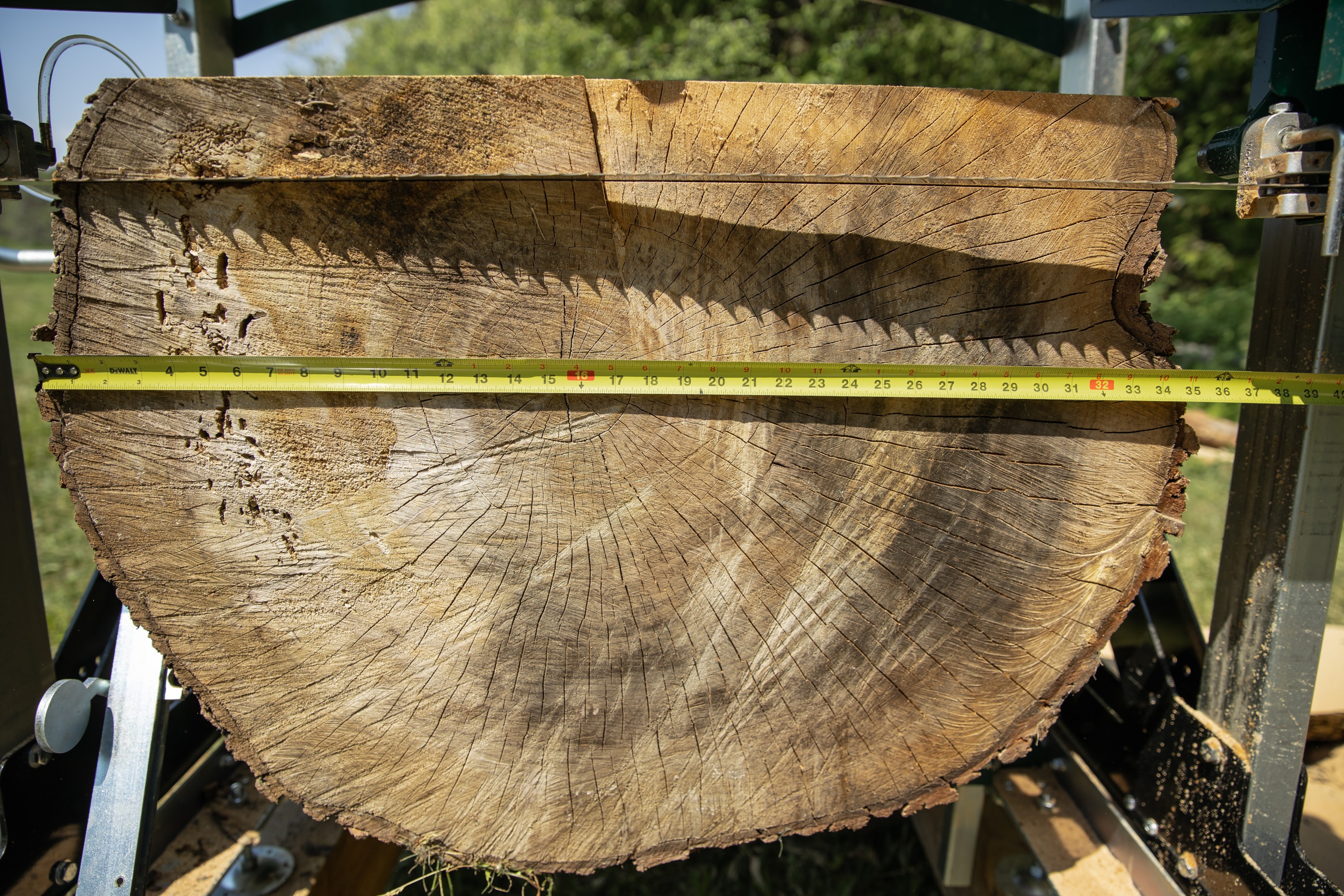
In conclusion: Get the right equipment to do the job fast
There are plenty of other issues you may face as a sawmill startup, including potential conflicts with customers, keeping track of your money and getting used to your local market. There's a lot of stuff to keep track of, but in one, two or even three years you'll have established yourself as a trusted source in your area for lumber. By taking care to ensure your customer is happy every time you'll have a consistent volume of customers looking to come back and purchase more lumber.
To recap, we highly recommend:
-
-
Getting a sawmill that can handle the logs you intend to mill, like the HM136MAX
-
Have a kiln if you need lumber to dry faster
-
Network and meet new customers, get familiar with their projects and their needs
-
Pay attention to market trends and pivot to meet them, like if charcuterie boards start trending you can sell smaller live edge slabs
-
Meet the demand in your area and serve your locality
-
SHOP SAWMILLS
HM122
An entry-level sawmill packed with impressive features at a budget-friendly price. Designed for hobby sawyers or woodworkers looking for an economical solution to mill lumber.
HM126
One of the best-valued sawmills in the industry. A longstanding favourite that ensures smooth, accurate cuts. Perfect for hobby sawyers, entrepreneurs or seasoned woodworkers.
HM130MAX®
A wide capacity sawmill that produces stunning high-value live-edge boards. Loaded with features including our FULLCUT™ sawhead, RapidChange® blade system, auto lube, and more.
HM136MAX™
The ultimate solution for cutting wide live edge slabs, perfect for tabletops, counters, benches, and more. Our unique FULLCUT™ sawhead design ensures your logs' widest assets are left intact.
Join the Woodland Mills Community Facebook group. Search advice and insights from over 65,000 knowledgeable, supportive members.
- Pre-purchase considerations
- Sawmill set-up support
- Project inspiration photos and videos
- Community troubleshooting support
